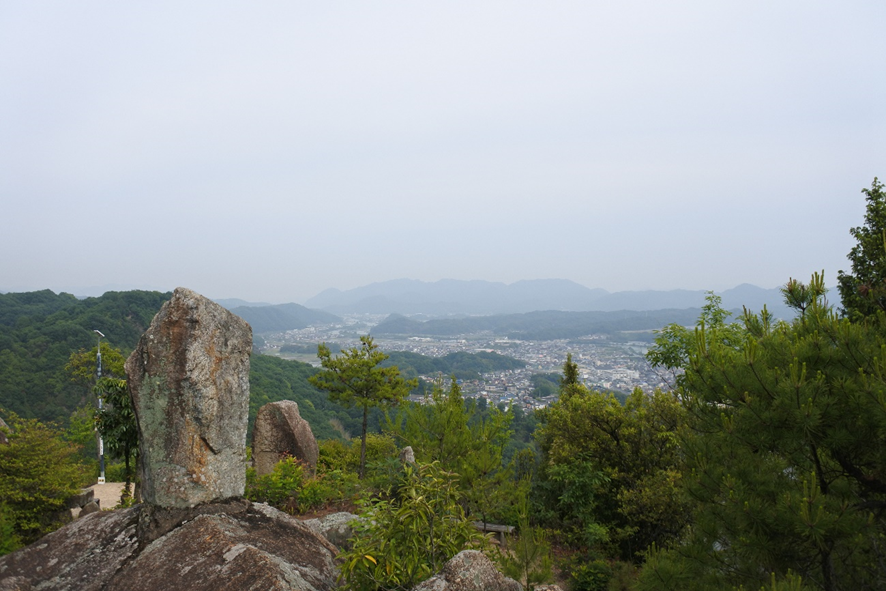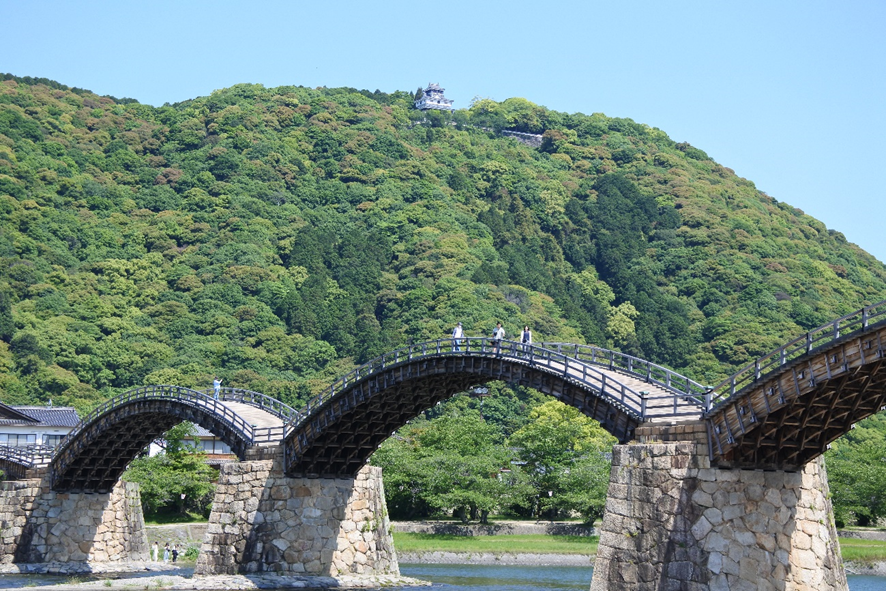Mori and 2 clans MAY, 2024
- 羽場 広樹

- May 27, 2024
- 6 min read
Updated: May 29, 2024
In 1557 (Kōji 3), Motonari sent the "Letter of Instruction for the Three Sons" to his three sons (Takamoto, Motoharu, and Takakage), admonishing them to band together and work to build the Mori clan. This was two years after the Battle of Itsukushima, and after Motonari had taken over the Ouchi domain in addition to Aki, he would go on to fully confront the Amago clan.
Yoritomo sent his retainers to various regions as land stewards. In the Chugoku region, there are clans such as the Kumagai clan and the Shishido clan that can be thought of as coming from the Kanto region, but the Mori and Kobayakawa clans were land stewards in Sagami and the Kikkawa clan in Suruga, and they were transferred there as land stewards. The Mori clan originated from Suemitsu, the fourth son of Hiromoto Ooe, who was a trusted administrative bureaucrat of Yoritomo, and Motonari is his descendant 11 generations later.
Based in Hiroshima, I toured the homelands of the Mori, Kobayakawa and Kikkawa. Hiroshima Airport is located to the east of the former Aki Province, making it an extremely inconvenient location for business, but the area was ruled by the Kobayakawa clan. Takakage Kobayakawa unified the two Kobayakawa clans (Nuta and Takehara), which had long been divided, moved the main castle from Takayama Castle to Shintakayama Castle, and developed Mihara Castle as a base for the navy. Mihara Station was built through the main citadel of Mihara Castle, but the castle tower and the surrounding moat are protected, and the Shinkansen passes by to the side.
Shortly after passing Mihara Station, the outbound Shinkansen passes through a tunnel under Takayama Castle and Shintakayama Castle. The Shinkansen briefly peeks out as it crosses the Nuta River that flows between the two castles, but in the Mihara area, the Shinkansen runs along the ruins of Kobayakawa Castles. Shintakayama Castle is built on a mountain just under 200 meters above sea level, and I thought it would be an easy climb, but it was steeper than I expected and I was exhausted. The view from the top of the main castle ruins was magnificent, but medieval mountain castles should not be underestimated. Takakage made Shintakayama Castle his base at the age of 19 and moved to Mihara Castle at the age of 52, but as the Mori clan's territory expanded, the clan's role in controlling the seas of the Seto Inland Sea grew.
The eastern frontier of the Mori clan moved from Bitchu and Bizen to Harima, eventually coming into conflict with Hideyoshi, who was based in Himeji. Hideyoshi persistently lobbied to have Takakage incorporated as a direct vassal in his process of taking control of the country, but Takakage maintained his position as a member of the Mori clan. After Hideyori was born, Hideyoshi was unsure what to do with his adopted son, Hidetoshi Kinoshita, who was a possible successor, and tried to have him adopted by Terumoto Mori, but Takakage begged to be his own adopted son, and Hidetoshi changed his name to Hideaki Kobayakawa. Hideaki died two years after the Battle of Sekigahara, and was stripped of his title as heirless, so Takakage sacrificed the Kobayakawa clan to protect the Mori clan.
Until Terumoto Mori built Hiroshima Castle in 1589 (Tensho 17), the Mori clan's castle was Yoshida Koriyama Castle. Since being sent by Yoritomo as the land steward of Aki Yoshida Manor, the Mori clan expanded their influence from their base in northern Aki for nearly 400 years. From Hiroshima, it takes just over an hour to head north on National Route 54 to reach Aki-Takata City, which is the base of Mayor Ishimaru, who has recently announced his candidacy for the Tokyo gubernatorial election, and was the base of the Mori clan. I stopped by the Aki-Takata City History and Folklore Museum at the foot of Koriyama Castle in advance to do some research before climbing up the castle, which repelled an attack by Haruhisa Amago with 30,000 troops, and it took just over an hour to enjoy the mountain castle.
When you enter northern Aki, you will feel a strange direction of the river. This area is not the Ota River, but a tributary of the Go River that flows into the Sea of Japan. When you think of Hiroshima, you may imagine a wide delta-like plain at the mouth of the Ota River and several rivers, but in reality there is little flat land, and when Terumoto built Hiroshima Castle, it was located close to the coastline. The Takeda clan, who were appointed as guardians at the end of the Kamakura period, built a castle on the top of a mountain called Takedayama, about 400 meters above sea level, overlooking Hiroshima city, but it did not necessarily become a base for controlling the entire Aki Province, and was unable to unite the forces that were firmly established in the country. In order to confront the Ouchi in the west, the Amago clan, who were expanding their power from Izumo, Motonari incorporated Aki through a marriage policy with the Kikkawa clan, the Kobayakawa clan, and the Shishido clan, which made up both wings centered on Yoshida-Koriyama.
Heading north along the Hamada Road and exiting at Oasa Interchange, you will come to Ogurayama Castle, the residence of the Kikkawa clan. The castle itself is small enough that you can walk around it in about 20 minutes, and it is hard to call it a sturdy castle. Motoharu later moved his main castle to Hineyama Castle, after which the Amago clan was defeated and the Kikkawa clan moved its headquarters to Gassan-Toda Castle. The Yoshikawa domain was located at the gateway to Iwami, where the Ouchi and Amago clans fought, but as the Mori domain expanded, they took control of the San'in Road and eventually confronted the Oda clan in Inaba and Tajima. The Yoshikawa clan invited a Hachiman shrine from their hometown of Suruga, and built Tatsuyama Hachiman shrine near Ogurayama, but the current main hall was rebuilt by Motoharu and is designated as an Important Cultural Property.
The Kikkawa clan split into the Aki Kikkawa clan and the Iwami Kikkawa clan in the latter half of the Kamakura period, the former was succeeded by Motoharu, and the latter produced Tsuneie, who became famous for the siege of Tottori Castle. Motoharu's son Hiroie did not move his army at Sekigahara, ceded the two provinces of Suo and Choshu to his lord, and became the lord of Iwakuni with 30,000 koku. Tsuneie's descendants served as his retainers and welcomed the Meiji Restoration together. The Kikkawa clan, the lords of Iwakuni, were granted autonomy as lords of 60,000 koku of rice after being restructured within the Choshu domain, but they were not official feudal lords under the Edo Shogunate system, and the successive lords had no rank or position. At the end of the Edo period, the Choshu domain fought off the Shogunate forces twice, but thanks to the efforts of the lord of Iwakuni, Tsunemoto Kikkawa, the domain escaped the crisis, and the Kikkawa clan was officially recognized as a daimyo by the new government in 1868 (Keio 4). He received the official rank of Junior Fifth Rank, Lower Grade, Suruga no Kami, which was a smart arrangement (the clan was originally from Suruga).
As per Motonari's teachings, the Kobayakawa and Kikkawa families fulfilled the role of the Mori clan's defenses, and 700 years after Oe Hiromoto, the Mori clan became a major driving force behind the Meiji Restoration. The Choshu clan was once on the verge of being crushed by Ieyasu, but even with the large reductions in its fiefdom, its vassals stuck by it, and over the course of 260 years its effective rice yield nearly tripled to 1 million koku. The Ouchi and Amago clans, which were constantly fighting among their relatives, were destroyed, and the Mori clan survived, so this culture of unity is probably inseparable from it.
In Aki-Takata city, there is the Kodachi Kofun, which was discovered recently (15 years ago), and because it is a keyhole-shaped tumulus and the clay figurines found there resemble those from Yamato, it is attracting attention as a key to solving the mystery of the 4th century. In neighboring Okayama prefecture, there is a super-large keyhole-shaped tumulus that dates back to the 5th century, and it is interesting that ruins that are thought to have been influenced by the Yamato court were discovered in Aki before a major government was established in Kibi.
The grave of Motoyoshi Shishido is close to the tumulus. Motonari married Princess Goryu to him and made him his subordinate. The ancestor of the Shishido clan was Tomoie Hatta, who was active under Yoritomo, and was played by Hayato Ichihara in "The 13 Lords of the Kamakura."

















Comments